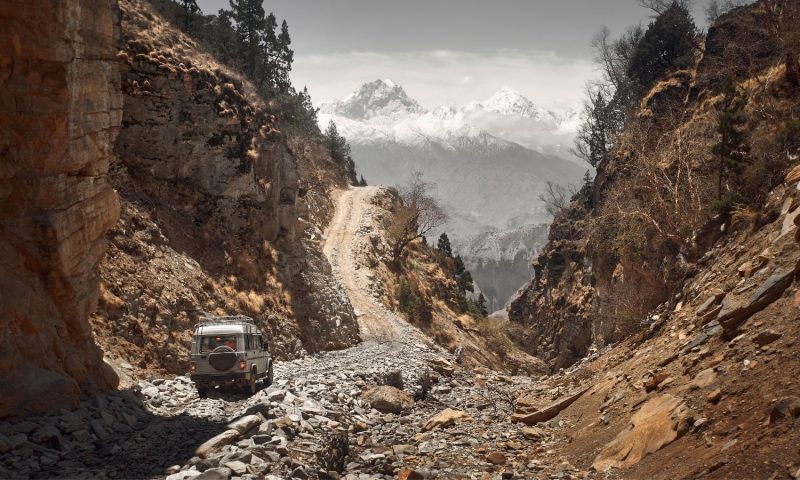When it comes to determining the difficulty of an off-road circuit for Jeep enthusiasts, there’s an added layer of difficulty involved: there’s no unified system for ranking courses. The ratings you’ll see online are generally crowdsourced determinations. However, people arrive at these ratings with some intuitive criteria. What determines an off-road trail’s difficulty level? Here’s what off-roaders consider.
Trail Width
It should occur to you on any trail that this is no four-lane divided highway. Quarters can get tight, and just how tight they get matters. The width of your path is arguably the most immediate factor in determining trail difficulty. Trails that can accommodate the width of two Jeeps will help a course obtain an easy rating from the experts, but the narrower they get from there, the higher the challenge will be. When the width is down to one Jeep wide with few spots to pass, that’s when things get hard.
Steepness
Hard trails are a tall order—literally. The steepness of a course’s terrain informs its difficulty level as much as a wide berth or lack thereof. While no one is getting out a protractor to measure exactly what sorts of inclines you’ll deal with, rating experts know a tough climb when they see one—or drive one. The harder it is to get up the hills, the harder your peers will rate a course.
Trail Conditions
Maintenance of off-road trails varies wildly. Private parks can immaculately tend their circuits, and parks under National Park Service or Bureau of Land Management jurisdiction benefit from federal oversight. Conversely, there are the Class IV roads of rural New Hampshire, the once-mainstream state routes that have since fallen into neglect—a lack of maintenance is what defines them. Hard courses get harder in the wake of severe weather, while erosion and traffic bring about rockier conditions. This disrepair can nudge a trail rating upward.
Obstacles
Trail owners and coordinators can put some awfully large rocks, mudholes, and other obstacles in your path. Getting over or around them can be fun, but there’s rarely anything easy about it. These additional challenges represent much of what determines an off-road trail’s difficulty level, and trying to take on more than your skill level can handle is a common mistake that off-roaders make. The risk-reward calculus of trail obstacles is high on both sides—it’s hard to beat the excitement of powering over that pile of timber, but you risk doing serious damage to your Jeep if you don’t stick the landing.
Water Hazards
Speaking of high risk and high reward, splashing through rivers and streams is the epitome of that. A trail that requires Jeep drivers to cross water will rack up a high difficulty rating no matter the formula. Without aftermarket modifications such as a lifted suspension and a snorkel, fording a river can do serious damage to a Jeep and end the off-road fun right then and there.
